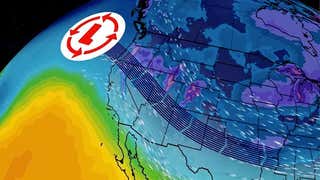

US
°C





Hundreds of birds in the San Francisco Bay area have been turning up dead or dying since Friday, coated with a light gray, odorless, gooey substance that scientists still haven't identified.
"We've never seen anything quite like it," California Department of Fish and Wildlife spokesman Andrew Hughan told the Associated Press. "So it's a mystery for the moment."
About 200 birds have been killed by the substance so far, a number that could rise because of the complexity of the still-yet-to-be-determined substance.
(MORE: )
As the San Francisco Chronicle reports, unlike an oil spill – initial tests revealed that the substance wasn't petroleum – there's no observable slick of the substance floating on the surface of San Francisco Bay. Because of this, scientists and officials are having trouble locating the source of, and the specific areas impacted by, the substance.
However, dead and otherwise impacted bird concentrations have been centered along the Alameda, San Leandro and Hayward shores of the San Francisco Bay thus far.
Although there's no definitive word yet on what the substance is, the Chronicle reports that wildlife officials have identified at least two potential culprits: polyisobutylene, a substance used in synthetic rubber solutions and in fuel additives, and a soapy, poisonous substance released from an algal bloom.
Whatever the substance is, its glue-like consistency coats birds' feathers, stripping them of their ability to insulate the cold, leading to hypothermia and an inability to float properly on the surface of the water. Birds that are impacted often beach themselves, obsessively pruning their gunk-filled coats on the shore, where they are picked off by predators that prey on their weakness.
If and when scientists do identify the substance, it will enable authorities to conduct an organized response, something that's desperately needed to help recover and treat sick birds. Only small teams comprised of biologists and members of wildlife rescue organizations were combing the beaches collecting impacted birds.
“It’s still a crisis,” Barbara Callahan, the interim executive director of International Bird Rescue told the San Francisco Chronicle. “At this time we've had no indication that it is slowing down.”
(MORE: )
As of Tuesday, some 360 birds had been recovered and were being treated at the International Bird Rescue in Fairfield, California.
Workers there were struggling to handle and treat the influx of affected birds, a process which can take days. Birds must be nurtured back to health before being coated with used to break loose the gunk.
The birds are then washed with dish soap to remove the goo completely. As the Chronicle notes, a single affected bird can be washed up to 40 times to completely remove the substance.
With not enough workers to respond to the birds, and more and more birds impacted each day, the crisis continues to escalate, even as the mystery of the substance remains unsolved.
A horned grebe is washed at International Bird Rescue, Tuesday, Jan. 20, 2015, in Fairfield, Calif. (AP Photo/Marcio Jose Sanchez)












